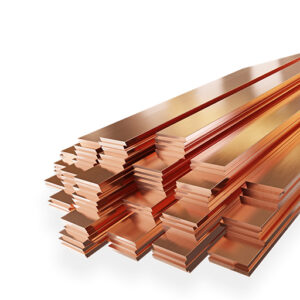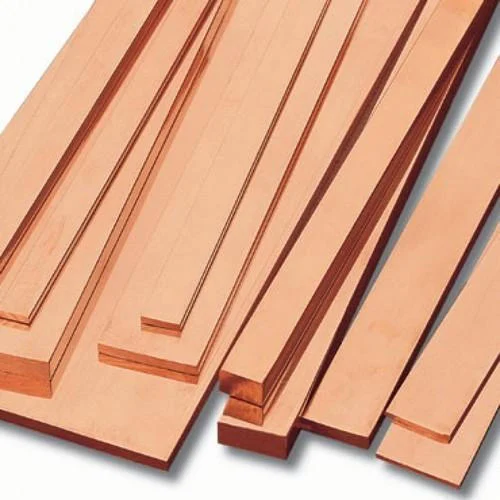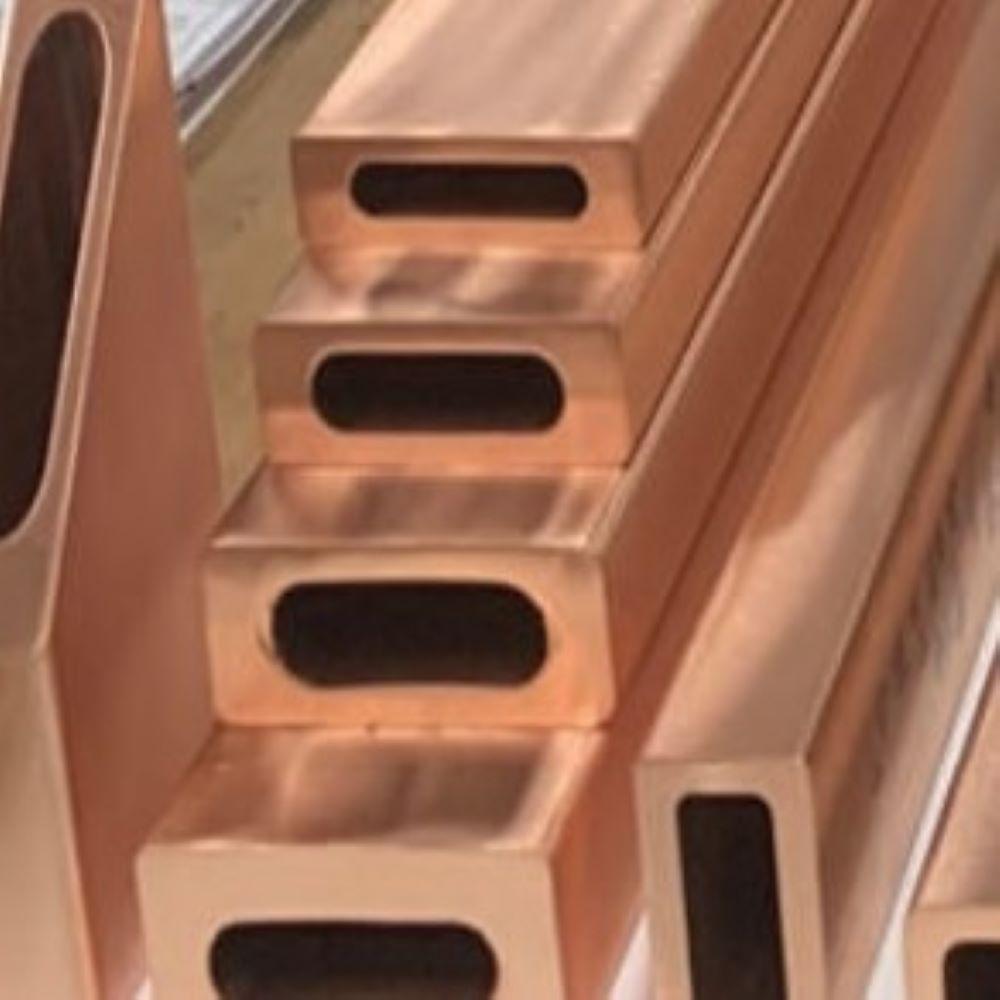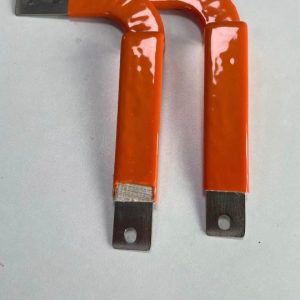Table of Contents

C-Fit Copper, a well-known manufacturer and exporter, specializes in making lasting copper bus bars type, for different industrial uses. C-Fit Copper is powered by a quality and precision engineering input, which ensures that the bus bars of the company correspond to the best standards of performance and reliability.
Copper busbars are basic parts of an electrical system, having the function of a good and effective way to deliver power. Copper bars with the highest grade of the material are the source of these bus bars. Besides that, copper possesses exceptional conductivity, corrosion resistance, and thermal heat exchange. Because of this, these bars are good for any environment. Copper Bus Bars of Fittings are available in different sizes and layouts so that one can accomplish the objectives of the project. Customers can utilize these bus bars in power distribution panels, switchgear and in electrical equipment freely as they will give them high quality bus bars which exactly fit their specifications.
Types in Copper Bus Bars:

Flat Copper Bus Bars
Flat copper busbars, which is a rigid, flat, non-flexible conductor that is utilized in both electrical power and grounding systems distribution, are one of the established electrical components. Flat Copper Bus Bars offer great conduction of current with less power losses, which are therefore utilized in high- current applications, i.e. switchgear, substations, and industrial power installations.

Hallow Copper Bus Bars
Hollow copper bus bars are tubular conductors of electrical systems that are made use of for the purpose of weight reduction and increasing cooling effectiveness. Copper materials possess the ability to deliver outstanding electrical conduction and can be therefore, used in applications where current and space decision & heat management are critical factors.

Insulated Copper Bus Bars
Busbars are insulated electrical conductors that are placed inside a protective insulation layer, and this role is aimed at redistributing the power in the most efficient way as well as improving safety, and reducing energy losses. Insulated Copper Bus Bars are mainly used in distribution systems of power and serve as a compact, strong and reliable solution in industrial, commercial and residential applications.
Copper Bus Bars Manufacturer and Exporter : Specification
Bus bars usually use standardized dimensions keeping in mind optimal performance and fitting properly within the electrical system. The specifications which are provided include material composition, whether it is copper or aluminum as well as various grades of purity levels for conductivity. Besides, bus bars as well are specified by dimensions in which the thickness, width, and length are designed for current carrying capacity and space limitations of the application. Surface finish, for corrosion resistance and electrical contact are also required to be specified such as tin plating or bare copper.
| Copper Bus Bars Specification | ||
|---|---|---|
| Dimension Details :- | Thickness 1 mm (min) 2 mm (min) 3 mm (min) 5 mm (min) 6 mm -50 mm | Width 10 mm – 50 mm 10 mm – 100 mm 10 mm – 150 mm 10 mm – 200 mm 10 mm – 250 mm |
| Specifications (ETP) :- | IS: 191, 613 & 1897, BS EN 13601:2002, ASTM B187 | |
| Cross section :- | Up to 3000 mm² | |
| Standard :- | EN 13601: 2002, EN 13602: 2002 | |
| Conductivity :- | Above 97% IACS min in Half Hard Above 99.95% in annealed | |
| Purity :- | Copper – 99.9% | |
| Specifications (OFC) :- | Copper: 99.99%, O 2: < 10 ppm Copper: 99.90%, O 2: < 100 ppm | |
| Type :- | Rectangular, square and any corner radius, Full Round Edge | |
Features of Copper Bus Bars
Copper Bus Bars are essential in the electric systems mainly for their high conductivity, versatility in all configurations, efficiency in heat dissipation, durability against harsh environmental conditions, and easy mounting. They supply power efficiently, keeping an even and presentable power supply across any industrial application.
- Conductivity: Solid copper or aluminum are the main bus bar materials used to reduce to the minimum the energy loss and to allow the efficient transmission of the electrical force.
- Versatility: The busbars come in different forms that help bring confidence as to how they can work with varying electrical systems and layouts, thus accommodating a multitude of applications.
- Heat Dissipation: Because of their high area to volume ratio, bus bars can readily disperse the heat generated during electrical transmission, thus making the system operation stable and avoiding overheating.
- Durability: Bus bars are designed to withstand high level of electrical power and environmental conditions through their robust construction and corrosion-resistance features.
- Ease of Installation: Simplicity and standardized connectors of the bus bars make their installation and maintenance pretty easy, therefore downtime and labor cost during system assembly and maintenance are decreased.
| Material E-copper F30 current load in A | Material E-AL current load in A | |||||||||||
|---|---|---|---|---|---|---|---|---|---|---|---|---|
| Width x thickness mm | Weight kg/ meter | AC up to 60 Hz bar | DC + AC up to 16 2/3 Hz bar | weight kg/meter | AC up to 60 Hz bar | DC + AC up to 16 2/3 Hz bar | ||||||
| Uncoated | Painted | Uncoated | Painted | Uncoated | Painted | Uncoated | Painted | |||||
| 40 | x | 3 | 1,070 | 366 | 435 | 367 | 436 | 320 | 285 | 346 | 285 | 346 |
| 25 | x | 5 | 1,115 | 327 | 384 | 327 | 384 | 340 | 255 | 305 | 255 | 305 |
| 30 | x | 5 | 1,340 | 379 | 447 | 380 | 448 | 410 | 295 | 356 | 296 | 356 |
| 20 | x | 10 | 1,780 | 427 | 497 | 428 | 499 | 540 | 331 | 393 | 331 | 393 |
| 40 | x | 5 | 1,780 | 482 | 573 | 484 | 576 | 540 | 376 | 456 | 376 | 457 |
| 50 | x | 5 | 2,230 | 583 | 697 | 588 | 703 | 680 | 455 | 556 | 456 | 558 |
| 30 | x | 10 | 2,670 | 573 | 676 | 579 | 683 | 810 | 445 | 536 | 447 | 538 |
| 60 | x | 5 | 2,670 | 688 | 826 | 696 | 836 | 810 | 533 | 655 | 536 | 658 |
| 40 | x | 10 | 3,560 | 715 | 850 | 728 | 865 | 1,080 | 557 | 677 | 561 | 682 |
| 80 | x | 5 | 3,560 | 885 | 1070 | 902 | 1090 | 1,080 | 688 | 851 | 694 | 858 |
| 50 | x | 10 | 4,450 | 852 | 1020 | 875 | 1050 | 1,350 | 667 | 815 | 674 | 824 |
| 100 | x | 5 | 4,450 | 1080 | 1300 | 1110 | 1340 | 1,350 | 846 | 1050 | 858 | 1060 |
| 60 | x | 10 | 5,340 | 985 | 1180 | 1020 | 1230 | 1,620 | 774 | 951 | 787 | 966 |
| 80 | x | 10 | 7,120 | 1240 | 1500 | 1310 | 1590 | 2,160 | 983 | 1220 | 1010 | 1250 |
| 100 | x | 10 | 8,900 | 1490 | 1810 | 1600 | 1940 | 2,700 | 1190 | 1480 | 1240 | 1540 |
| 120 | x | 10 | 10,680 | 1740 | 2110 | 1890 | 2300 | 3,240 | 1390 | 1730 | 1460 | 1830 |
| 160 | x | 10 | 14,240 | 2220 | 2700 | 2470 | 3010 | 4,320 | 1780 | 2220 | 1900 | 2380 |
| 200 | x | 10 | 17,800 | 2690 | 3290 | 3040 | 3720 | 5,400 | 2160 | 2710 | 2350 | 2960 |
| 12 | x | 2 | 210 | 108 | 123 | 108 | 123 | 60 | 84 | 97 | 84 | 97 |
| 15 | x | 2 | 270 | 128 | 148 | 128 | 148 | 80 | 100 | 118 | 100 | 118 |
| 20 | x | 2 | 360 | 162 | 189 | 162 | 189 | 110 | 127 | 150 | 127 | 150 |
| 15 | x | 3 | 400 | 162 | 187 | 162 | 187 | 120 | 126 | 148 | 126 | 148 |
| 20 | x | 3 | 530 | 204 | 237 | 204 | 237 | 160 | 159 | 188 | 159 | 188 |
| 25 | x | 3 | 670 | 245 | 287 | 245 | 287 | 200 | 190 | 228 | 191 | 228 |
| 30 | x | 3 | 800 | 285 | 337 | 286 | 337 | 240 | 222 | 267 | 222 | 268 |
| 20 | x | 5 | 890 | 274 | 319 | 274 | 320 | 270 | 214 | 254 | 214 | 254 |
Copper Bus Bars : Dimension Chart and Size Table:
| Width * Height (W*H) | (W*H) sqmm | (W*H) sqmm |
|---|---|---|
| 25*05 | 60*05 | 100*08 |
| 30*05 | 60*08 | 100*10 |
| 30*08 | 60*10 | 100*12 |
| 35*05 | 70*05 | 110*08 |
| 35*08 | 70*08 | 110*10 |
| 40*05 | 70*10 | 110*12 |
| 40*08 | 70*12 | 120*08 |
| 40*10 | 80*05 | 120*10 |
| 50*05 | 80*08 | 120*12 |
| 50*08 | 80*10 | |
| 50*10 | 80*12 |
Copper Bus Bars : Advantages And Disadvantages
Copper Bus Bars : Advantages
- Distinctive conductivity allows heat to move freely from the base, reducing the heat loss from the floor.
- The fact that it has good thermal conductance ensures the proper heat dissipation.
- In comparison to iron, aluminum has a form of passive resistance to becoming corroded that eliminates the necessity of maintenance.
- The ductility makes the material easier to be shaped or formed and gives pros to connectivity.
Copper Bus Bars : Disadvantages
- The higher start up cost and the other factors.
- Increase in weight feature a problem of control.
- May be stolen because of their high value due to their high value.
- It is governed by the changing situations of the market.
- Oxidation potential demands the necessary protection measures.